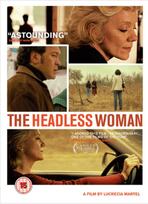| Based on Domingo Faustino Sarmiento’s text Facundo: Civilisation and Barbarism, the urban environment is considered civilized and in opposition the rural is associated with the native and barbaric (467). This way of perception defines “the others” and enhances the asymmetrical power paradigm (467). To Lange-Churion, the center stage in Martel’s movies are taken by white female characters. They belong the upper classes, but are located in provinces. Thus the marginalized natives are pushed to the background (468). Another characteristic of Martel’s films is that they do not succumb to the Hollywood recipe of storytelling, but rather rely on “gestures, moods, repeated motifs, incomplete and almost spasmodic dialogues, parallel framing” (469). This approach to filmmaking is intentional by Martel, who dislikes the viewer to be complete immersed in the viewing (470). To her this prevents the viewer from critically examination of her films (470). |
Lange-Churion examines the civilization/barbarism in Martel’s film through Foucault’s concept of heterotopia or the abnormal space. He focuses on three of Martel’s films – The Swamp, The Holy Girl and The Headless Woman. In The Swamp the swimming pool is the symbol for the decadence and the recession of the provincial bourgeois family (472). Further, Martel avoids tracking shots to show the enclosed environment the characters are moving through, an idea enhanced by her intentional use of close-ups (472,473). To Lange-Churion, this is especially evident in the first two films from the trilogy, where the spaces become gothic (473). In The Headless Woman, the enclosed spaces are scattered, but they are connected by another enclosure, the car (473). These enclosed spaces are providing the necessary boundary between the upper classes and the barbaric outside environment (474). Moreover, this notion is enhanced by the characters themselves, evident in their superior behavior (474). However, the leading characters actions are getting them into troubles and thus disrupting their bourgeois balance and rendering them the barbaric ones (476). These are the spaces that show the hidden discrimination between the classes. Discrimination is the underlaying current, because if it is exposed then can be confronted and opposed (477). The heterotopic concept is functioning on two levels. First, the people from the civilized caste are spatially separated from the natives or the barbarians. On the other hand though, the civilized rely on the barbaric for their survival and functioning (479). The barbaric/native being the supporting members of the cast are not specifically seen and the cinematic attention is not drawn to them. However, the barbaric/native servants can be heard through their actions – cleaning, cooking, serving, gardening ext. (479,480).
I can argue that this observation is based on other bourgeois perception – elegance demands quietness. The louder people are the less sophisticated they seem. The Swamp, successfully reverse the male/female roles by portraying the female characters as the driving force and the male characters as passive participants.
I can argue that this observation is based on other bourgeois perception – elegance demands quietness. The louder people are the less sophisticated they seem. The Swamp, successfully reverse the male/female roles by portraying the female characters as the driving force and the male characters as passive participants.

 RSS Feed
RSS Feed